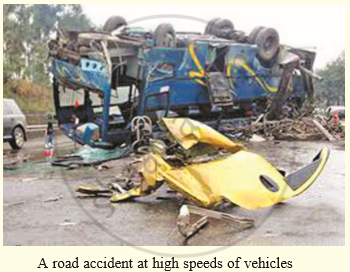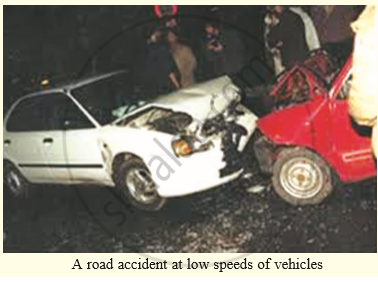Advertisements
Advertisements
Question
A 1000 kg vehicle moving with a speed of 20 m/s is brought to rest in a distance of 50 metres :
(i) Find the acceleration.
(ii) Calculate the unbalanced force acting on the vehicle.
Solution
(i) Final velocity, v = 0 (because the car is brought to rest)
Distance covered, s = 50 m
So, Force = mass × acceleration
But we do not know the value of a.
Making use of the third equation of motion we get,
v2 − u2 = 2as
⇒ 0 − 202 = 2 × a × 50
⇒ −400 = 100a
⇒ a = −4
The acceleration = −4 m/s2
(ii) Force = mass × acceleration
Mass = 1000 kg
Force = 1000 × (−4)
= − 4000 N
Unbalanced force acting on the vehicle is −4000 N.
APPEARS IN
RELATED QUESTIONS
Name the unbalanced force which slows down a moving bicycle when we stop pedalling it.
State the various effects of force.
Give one example where a force changes the direction of a moving body.
What do you understand by the terms “balanced forces” and “unbalanced forces” ? Explain with examples.
What type of forces – balanced or unbalanced – act on a rubber ball when we press it between our hands ? What effect is produced in the ball ?
Why are road accidents at high speeds very much worse than road accidents at low speeds ?

A car is moving on a level road. If the driver turns off the engine of the car, the car’s speed decreases gradually and ultimately it comes to a stop. A student says that two forces act on the car which bring it to a stop. What could these forces be ? Which of these two forces contributes more to slow down and stop the car ?
What is the relationship between force and acceleration ?
When we talk of a force acting on a body, it usually means :
The SI unit of force is ______.
